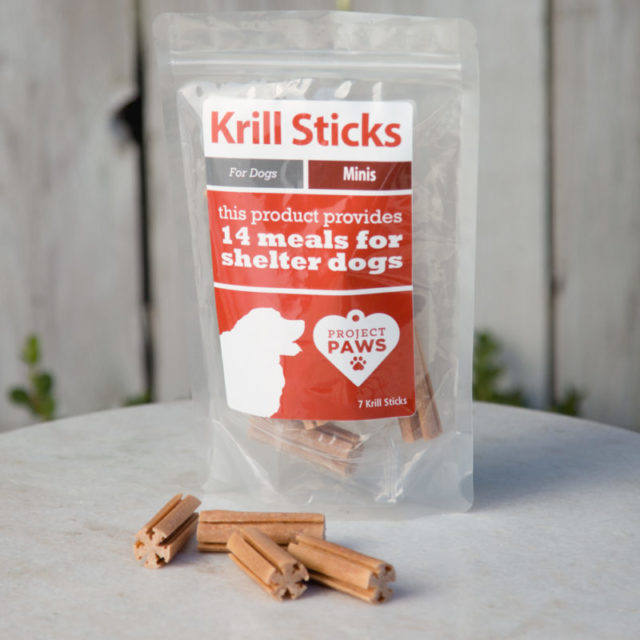With the endless stream of dog food recalls we’ve witnessed over the years, it comes as no surprise that consumers are just not trusting pet food companies as they used to. Contaminated food and poisonous ingredients are some of the top concerns.
Adding another layer to the problem, some important ingredients claimed in the ingredients list of your pup’s food are very likely to be completely inaccurate.
Which particular nutrient is this? Omega-3 fatty acids.
A majority of dog food brand labels claim to have Omega-3 DHA and EPA in their formula. Pet food companies market this nutrient due to it being absolutely essential for dogs’ health. Specifically, Omega-3s help support the immune system, brain health, joint health, and skin and coat health.
Even more important is that dogs’ bodies are incapable of producing Omega-3’s on their own. Therefore, they must obtain it via their daily diet.
Introducing the Behemoth Creating (Destroying) Dog Food
To comprehend why dog food companies would lie to us, let’s take a look at the way kibble is produced.
Behold, the extremely creepy device below. This thing is called an “extruder” and is used in the manufacturing of dry dog food. How is it done? The “food” mixture is forced through the machine at extremely high temperatures. The steam cooks the mixture and then “extrudes” it through a small hole, by which it is formed into the well-known kibble shapes we see in dry dog food bags.
 Source: Youtube
Source: Youtube
The problem here is that Omega-3’s are highly susceptible to heat, and break down easily, becoming useless during a high heat manufacturing method such as through the extruder.
It’s a wonder how any nutrients survive this process, let alone fragile omega-3 fatty acids, right?
This is apart from any notion that pet food companies are lying to us about the ingredients lists. They are being dishonest about what is biologically available to your dog in the kibble after the harsh manufacturing process.
The Next Challenge: Spoiling
Yet, if the omega-3 fatty acids were to miraculously survive the intensity of high-heat extrusion, their next obstacle comes from the risk of spoiling. Remember we said they were fragile? Once omega-3 fatty acids come into contact with light and oxygen, they have a tendency to quickly become rancid.
From the very moment that we rip apart that bag of dog food kibble, letting air and light in, the expiration of the product’s omega-3 nutrients has already begun. Keeping your food in an airtight container will help, however it is just impossible to prevent the fatty acids from coming into contact with these elements and spoing.

If Omega-3s Aren’t Bio-Available in Dry Dog Food, Where Can They Get It?
Many health conscious pet parents have resorted to supplementing their dog’s supply of omega-3s, due to the difficulty in obtaining enough omega-3 fatty acids from their food supply.
However, this then begs the question, if omega-3s cannot survive dog food manufacturing, what is the potency of an omega-3 supplement?
Unfortunately, there is no good answer as they vary greatly from one product to the next. Many omega-3 soft supplements are also made through a heat-based extrusion process, rendering the potency next to none.
Here are some helpful tips for selecting a quality omega-3 supplement for your pup(s):
#1 – Go with cold-press manufacturing: If you go with an omega-3 soft chew, choose one that boasts a cold-press extrusion process. This will not damage the ingredients with heat during processing. The whole thing is done at low temperatures, preserving the bioavailability of the omega-3s. This kind of manufacturing is expensive, so not nearly as many companies use it as a result, but its absolutely vital for the product’s efficacy.
#2 – Choose low-mercury fish sources: In recent years, consumers have become increasingly aware of pollutants such as mercury in the world’s fish supply. We’d highly recommend choosing supplements with omega-3s sourced from smaller fish species (like anchovies and krill) which are lower on the food chain. Because of their position in the chain, and their shorter lives, they tend to have significantly less heavy metals stored in their bodies as compared to larger fish.
#3 – Be Wary of Spoiling: If you use supplements in liquid form, be careful the product does not become rancid. Liquid supplements in plastic bottles are particularly prone to spoiling, so we recommend choosing glass bottles instead. If you do choose a liquid form, buy small bottles instead of large ones to reduce the chance of you having to throw out the bottle due to spoiling and wasting money.
The Bottom Line
Simply: Do not let yourself be fooled by packaging that states all your dog’s nutritional needs will be met by a bag of processed dog food. Talk to your vet, and determine if omega-3 supplements are right for your dog.
If Omega-3 supplementation makes sense for your dog, we’d encourage you to try our Pure Antarctic Krill Sticks. These sticks have way more bio-available omega-3s than fish oil supplements and blow kibble completely out of the water.
These statements have not been evaluated by the Food and Drug Administration. This product is not intended to diagnose, treat, cure, or prevent any disease. The information on this website is not intended to replace a one-on-one relationship with a qualified health care professional.
Featured Image Credit: Lisa Yarost

 Toledo, United States.
Toledo, United States.